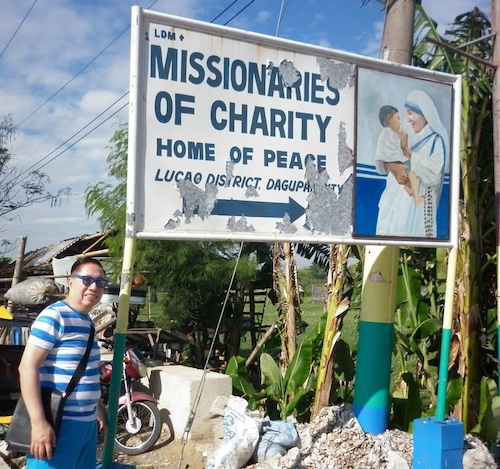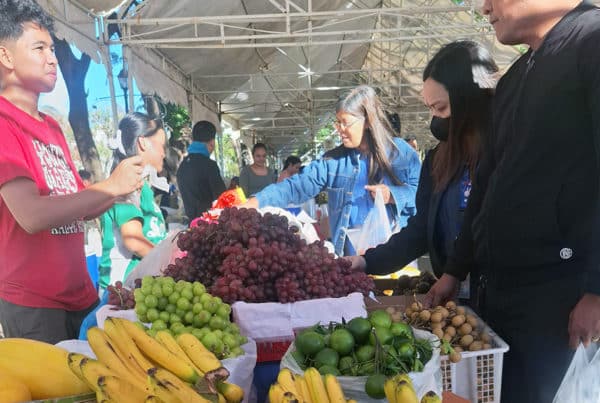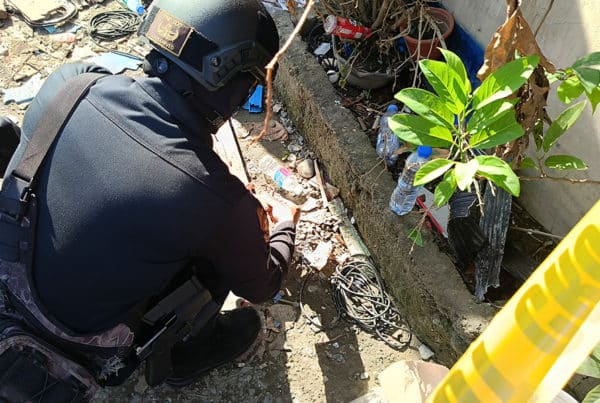
Mother Teresa’s Abong na Panangaro
 By Rex Catubig
By Rex Catubig
PEOPLE point to it as Abong na Panangaro or House of Love, a secluded compound in Barangay Lucao in Dagupan, off the road going to Binmaley. It is the Missionaries of Charity, Home of Peace, a shelter run by the sisters of the Missionaries of Charity, founded by Mother Teresa. This enclave is home to the sister novitiates of various nationalities around Asia, who stay for an average of two years to minister to the poorest brethren as part of their vocation, assisted by volunteers.

This mission is both an orphanage and home for the aged. It houses abandoned babies of unwed mothers, and young children who are left there by their parents who cannot support them. It also accommodates the elderly who have nowhere to stay.
I got involved with the mission during one of my balikbayan holidays, owing to the prodding of my friends who were volunteers. It was a life-changing experience. I thought we would just go there to feed the residents. But the Mother Directress, a Vietnamese, required that, to be true to the call of service, we must personally do the food preparation–from marketing, cooking, serving–and feeding.
With my Kumare, we scoured the Malimgas market the night before, and early next morning. I took a knife and cutting board and started chopping and slicing ingredients for “isang talyasing pancit”! It was one of several dishes we prepared: vegetable, pork, chicken.
At the orphanage, we laid out the food on the table, and scooped a portion each on the plates. We each had to feed one child personally. We did the same thing with the elderly who were served after.
Feeding the children was a heart-rending experience. Because they were so used to hunger and food was hard to come by, eating was more a curiosity than a joy. They try to cram their tiny mouths with as much food as they can spoon, but they get satiated after a mouthful, and give up, hurrying to drink water instead.
The elderly showed better appetite but were sometimes lost in their thoughts, in the middle of chewing their food.
It was no easy task as you are confronted by harsh images that are in sharp contrast to what the world presents. Unlike in commercials where babies are cute and cuddly, the babies here are sick or maimed and they smell. But they delight in touching and clinging to you, desiring to be cuddled. They are not only malnourished in food, but lacking in the nourishing and nurturing warmth of human love and care.
Making it more difficult was overcoming your fear and pandidiri–the overpowering sense of repulsion. You feel guilty and struggle with the shame. But surmounting this, you feel good because you are confronted with a real self—shorn of kakiyemehan and kaartehan, of pretense and artifice. Then, you realize that what really matters is being true, able to accept, relate and share yourself to another human being—without reservation.
One time, aside from chocolates, l brought a whole box of toys thinking they’d be thrilled. What a mistake. They were just too overwhelmed and ended up not really enjoying and treasuring any toy. It was more than enough and ended up not really caring for it.
More than toys, it seemed that the one thing they couldn’t have enough of is– touch and embrace. That’s all they really want–to be touched and be held. “Ipor-ipor ira insan laba-labay day lakapen tan akwalen”.
That’s when the place becomes a haven of love and peace.
It’s been over two decades now since I’ve been engaged in this surreal realm of kindness. It has provided me an anchor that keeps me moored amid the waves of tumultuous living, and securely grounded in the midst of gay abandon.
Each visit leaves an insight and a lesson. And the poetic irony is after leaving this lair of the poorest of the poor, one gets away a richer person.










